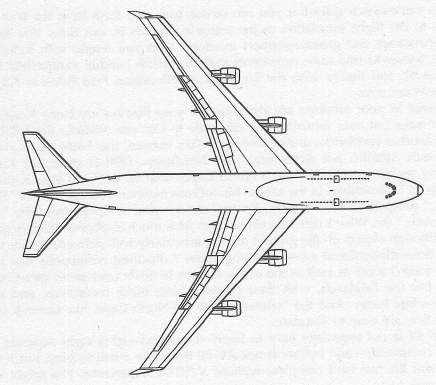PC Pilot
The Complete Guide to Computer Aviation
by Steve Smith
CHAPTER THIRTEEN
OTHER FLIGHT SIMULATIONS
The Best of the Rest
So many sims, so little time. I could easily write another dozen chapters about flight sims I haven't yet mentioned or have only touched upon in passing. Some of them deserve credit—if not praise—for originality. Some of them bring nothing new to the party, but have their own oddball charm. Some of them occupy a specialized niche. Some of them are dogs.
In celebration of diversity, you might want to check out:
SUBLOGIC'S AIR TRANSPORT PILOT
If you love Flight Simulator (and who doesn't?), but you want something more, you're probably at the Big Branch in the Flight Sim Decision Tree: you either want to fly in combat or you want to get a real pilot's license. If your interest is in general aviation (that is, private planes), you're going to start accumulating a lot of highly technical add-on software for Flight Simulator (flight planners, IFR plotters, nav-aids, etc.). If your interest is in commercial aviation, there's only one way to go, and that's with SubLogic's Air Transport Pilot, where the Sturm und Drang of the fighter jock are replaced by the sober responsibilities of the silver-templed airline captain.
A fleet of five aircraft is yours to command: the flagship Boeing 747, with seats for 420 passengers; the newer transcontinental 767; the older 737, workhorse of most of the world's airlines; the European-made Airbus A320; and the stubby little Shorts 360, a 44-seat turbo-prop commuter aircraft used mainly for connecting flights. It's not for nothing that the first four of these are known as the "heavies" of the air transport biz.
Realistic features of these aircraft include goodies like color weather radar (and the ability to dial in almost any weather variables), thrust reversers, and instruments that purport to measure the ratio of turbine discharge pressure to compressor inlet pressure or tell you when "the stabilizer is out of trim for the conditions required by the autopilot."
If A.T.P. doesn't sound like a fun game, it isn't. Flying one of these babies is no lark, and the flight restrictions are so stern that they make Falcon look like Mardi Gras by comparison; screw up in A.T.P.'s career mode and you'd better go back to motel management. You're marked down for doing anything even remotely fun, like exceeding the posted speed limit, beating up the field, flying upside down underneath the Golden Gate Bridge, discharging the passengers at forty thousand feet, or smoking in the lav. Even for minutiae like being tardy in retracting the gear, landing in the dreaded "unforecast zero zero" (whatever that means), or—this is practically a capital offense—using too much fuel. (It's a wonder the passengers don't object to your turning off the fresh-air filter packs to save a dram of JP2.)
But seriously, folks, A.T.P. is an absolutely amazing program, providing you've got the patience of a saint and an overweaning interest in replicating all the ennui of a commercial pilot's life in the "glass cockpit" (not a PC cue; this refers to the all-digital flight deck).
The ne plus ultra of A.T.P. is the "structured flight assignments." This is a career mode wherein you undertake a series of fifty or more flights to and from any of twenty-six major U.S. cities, and are graded for airmanship (your ability to follow instructions such as "Climb and maintain one-six thousand; turn right to bearing two-niner-zero; contact Boston approach on one-two-eight-point-five-zero," and so on), efficiency (fuel consumption; I was kidding about the filter packs), and safety (like the all-important preflight checklist). You rack up points for all of this, and if you do well, you get not only your wings, you get a starting salary of $30,000 a year (presumably in simulated dollars).
A.T.P. was developed by a branch of the original Flight Simulator design team, and visually it looks almost exactly like Flight Simulator 4.0, except both the cockpit and the scenery are considerably more detailed. Indeed, SubLogic has for years been a provider of scenery disks, originally for Flight Simulator 3.0 and subsequent editions, and later for A.T.P., after cofounder Bruce Artwick left to start his own company. SubLogic's greatest triumph is "USA East" and "USA West"; two insanely detailed scenery collections that will work with either Flight Simulator or A.T.P.



Table of Contents | Previous Section | Next Section
